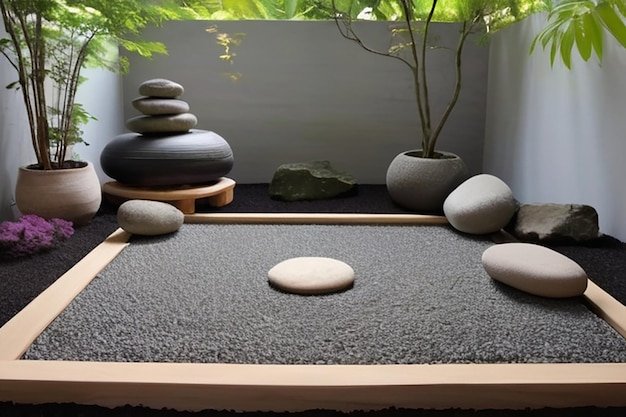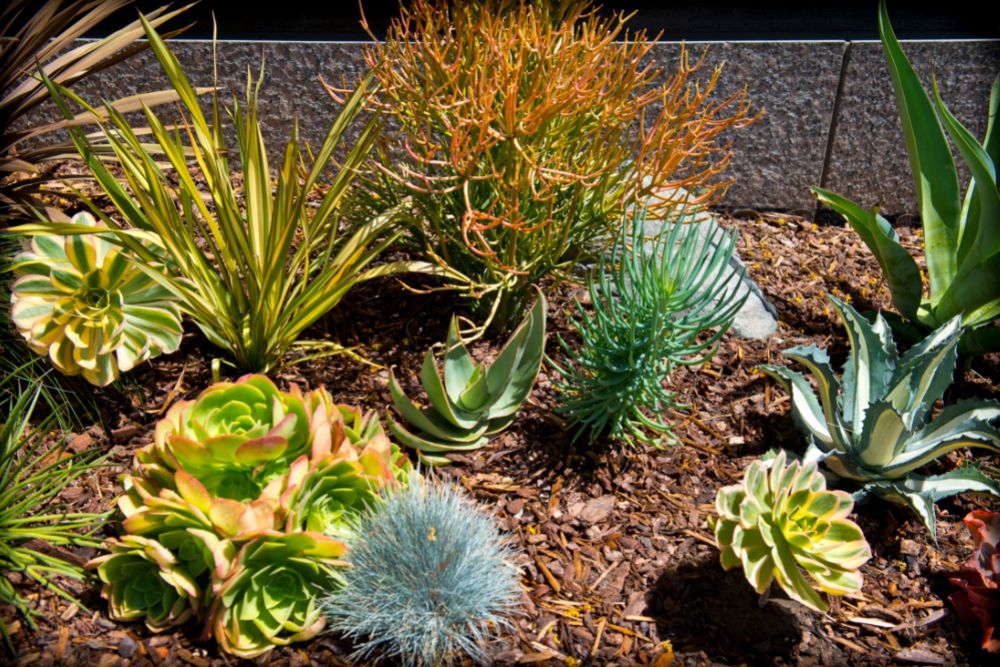
Breathe Easy: The Ultimate Guide to Air Purifying Plants for Your Bedroom
Transform your bedroom into a sanctuary of clean air and tranquility with the power of nature. Discover the best air purifying plants, their benefits, and how to care for them.
The Bedroom Oasis: Why Air Quality Matters
Our bedrooms are our havens, the places where we retreat to recharge and rejuvenate. But often, they’re also filled with hidden pollutants. From the off-gassing of furniture and electronics to the everyday dust and allergens, the air we breathe in our bedrooms can be far from pristine. This is where the magic of air purifying plants comes in. They are nature’s own air filters, silently working to cleanse the air and create a healthier environment for you to sleep and thrive in. Think of them as your personal air fresheners, but ones that actually do something good for you!
Poor air quality in the bedroom can lead to a host of problems. Allergies can flare up, causing sneezing, runny noses, and itchy eyes. Asthma symptoms can worsen, making it difficult to breathe. Even if you don’t suffer from allergies or asthma, you might experience headaches, fatigue, and difficulty sleeping due to the presence of pollutants. That stuffy feeling you sometimes get in your bedroom? It’s often a sign that the air isn’t as clean as it could be.
Fortunately, there’s a simple, natural, and beautiful solution: air purifying plants. These green wonders absorb harmful toxins from the air, releasing fresh oxygen and adding a touch of nature’s beauty to your space. They’re like having tiny, green superheroes on your side, fighting off the bad guys in the air while you sleep. It’s a win-win!
Top Contenders: The Best Air Purifying Plants for Bedrooms
Ready to transform your bedroom into a breath of fresh air? Here are some of the best air purifying plants to consider, along with their specific benefits and care tips:
1. Snake Plant (Sansevieria trifasciata)
The snake plant is a true champion when it comes to air purification. It’s incredibly low-maintenance, making it perfect for even the most forgetful plant parents. Snake plants are known for their ability to remove formaldehyde, xylene, toluene, and benzene from the air. They also convert carbon dioxide into oxygen at night, making them ideal for bedrooms. Talk about a night shift worker!
- Care Tips: Snake plants thrive in low light conditions and don’t need much water. Allow the soil to dry out completely between waterings. Overwatering is the biggest threat to these resilient plants.
- Benefits: Removes toxins, produces oxygen at night, low maintenance.
2. Spider Plant (Chlorophytum comosum)
Spider plants are another excellent choice for air purification. They’re easy to propagate, meaning you can easily grow new plants from the “spiderettes” (baby plants) that sprout from the mother plant. Spider plants are effective at removing formaldehyde and xylene from the air. Plus, their cascading leaves add a touch of whimsy and charm to any bedroom.
- Care Tips: Spider plants prefer bright, indirect light. Water them regularly, allowing the soil to dry out slightly between waterings.
- Benefits: Removes toxins, easy to propagate, visually appealing.
3. Peace Lily (Spathiphyllum)
The peace lily is a beautiful and elegant plant that not only purifies the air but also adds a touch of tranquility to your bedroom. They’re known for removing mold spores and various toxins, including benzene, formaldehyde, and trichloroethylene. The elegant white flowers add a touch of beauty to your space. They also let you know when they need water by drooping noticeably.
- Care Tips: Peace lilies prefer low to medium light and consistently moist soil. Avoid overwatering, which can lead to root rot.
- Benefits: Removes toxins, helps with mold, visually appealing, indicates when it needs water.
4. English Ivy (Hedera helix)
English ivy is a versatile plant that can be grown in a hanging basket or trained to climb. It’s effective at removing mold and other airborne particles, making it a great choice for bedrooms that might be prone to dampness. Be cautious, though, as English ivy can be mildly toxic if ingested, so keep it out of reach of children and pets.
- Care Tips: English ivy prefers bright, indirect light and regular watering. Allow the soil to dry out slightly between waterings.
- Benefits: Removes mold and airborne particles, versatile.
5. Boston Fern (Nephrolepis exaltata)
Boston ferns are a classic choice for adding a touch of lush greenery to your bedroom. They’re particularly effective at removing formaldehyde, xylene, and toluene from the air. They also add a sense of serenity with their cascading fronds. They like humidity, so are perfect for bedrooms.
- Care Tips: Boston ferns thrive in bright, indirect light and high humidity. Keep the soil consistently moist but not soggy. Regular misting can help maintain humidity.
- Benefits: Removes toxins, adds humidity, visually appealing.
6. Bamboo Palm (Chamaedorea seifrizii)
Bring a touch of the tropics into your bedroom with the bamboo palm. It’s a great air purifier, removing benzene, formaldehyde, and trichloroethylene. Bamboo palms also add a sense of elegance and tranquility to your space. They prefer bright, indirect light and regular watering.
- Care Tips: Bamboo palms prefer bright, indirect light and consistently moist soil. Avoid overwatering.
- Benefits: Removes toxins, adds a tropical feel, elegant.
7. Areca Palm (Dypsis lutescens)
Similar to the Bamboo Palm, the Areca Palm is a larger, more dramatic option, offering substantial air-purifying capabilities. It excels at removing a range of toxins and also adds significant humidity to the air, which can be especially beneficial during drier months. Their graceful, arching fronds create a calming and inviting atmosphere.
- Care Tips: Provide bright, indirect light. Water regularly, allowing the top inch of soil to dry out between waterings. They appreciate regular misting.
- Benefits: Removes toxins, adds humidity, visually striking.
8. Golden Pothos (Epipremnum aureum)
A true workhorse in the air purification world, the Golden Pothos is easy to care for and incredibly effective at removing a variety of pollutants, including formaldehyde, benzene, and xylene. Its trailing vines make it perfect for hanging baskets or draping over shelves, adding a touch of vibrant green to your space. This plant is very forgiving and will thrive even if neglected for a bit.
- Care Tips: Thrives in a variety of light conditions, from low to bright indirect light. Allow the soil to dry out between waterings.
- Benefits: Removes toxins, easy to care for, versatile.
Beyond the Basics: Choosing the Right Plants for Your Bedroom
Selecting the right air purifying plants for your bedroom goes beyond just choosing the ones that look pretty. Here are a few factors to consider to ensure you create the perfect green oasis:
1. Light Conditions
Assess the amount of natural light your bedroom receives. Some plants, like snake plants and peace lilies, thrive in low-light conditions, while others, like spider plants and Boston ferns, prefer bright, indirect light. Choose plants that match the light conditions in your room to ensure they thrive and effectively purify the air.
2. Space Availability
Consider the size of your bedroom and the available space. If you have limited space, opt for smaller plants or hanging plants. For larger bedrooms, you can incorporate larger plants or a combination of different sizes and varieties. Don’t overcrowd your space, as this can hinder the plants’ ability to effectively purify the air.
3. Personal Preferences
Choose plants that you find visually appealing. Do you prefer lush greenery, elegant blooms, or trailing vines? Select plants that match your personal style and create a relaxing and enjoyable atmosphere in your bedroom. The plants should be a source of joy, not just a chore!
4. Allergy Considerations
If you or someone in your household has allergies, choose plants that are less likely to trigger allergic reactions. Some plants, like peace lilies, can be problematic for people with latex allergies. Do your research and choose plants that are safe for your specific needs.
5. Pet Safety
If you have pets, be mindful of the potential toxicity of certain plants. Research the plants you’re considering and ensure they’re safe for your furry friends. Some plants, like English ivy, can be harmful if ingested.
Plant Care 101: Keeping Your Green Friends Happy
Once you’ve chosen your air purifying plants, proper care is essential to ensure they thrive and continue to purify the air in your bedroom. Here are some essential plant care tips:
1. Watering
Watering is one of the most crucial aspects of plant care. The frequency of watering depends on the plant species, the size of the pot, and the environmental conditions. Generally, it’s best to allow the soil to dry out slightly between waterings. Overwatering can lead to root rot, which can be fatal to plants. Stick your finger into the soil to check the moisture level before watering. If the top inch or two of soil feels dry, it’s time to water. Don’t be afraid to experiment a bit, every plant is different!
2. Light
Ensure your plants receive the appropriate amount of light. Most indoor plants prefer bright, indirect light. Avoid placing them in direct sunlight, which can scorch their leaves. If your bedroom doesn’t receive enough natural light, consider using grow lights to supplement the light. Rotating your plants occasionally ensures they get even light exposure.
3. Humidity
Some plants, like Boston ferns, thrive in humid environments. If your bedroom is dry, you can increase humidity by misting your plants regularly, using a humidifier, or placing the pots on a tray filled with pebbles and water. As the water evaporates, it will increase the humidity around the plants.
4. Fertilizing
Fertilize your plants during the growing season (spring and summer) to provide them with essential nutrients. Use a balanced liquid fertilizer diluted to half strength. Follow the instructions on the fertilizer label for proper application. Don’t over-fertilize, as this can damage the plants.
5. Repotting
Repot your plants when they outgrow their current pots. Choose a pot that’s slightly larger than the previous one and use a well-draining potting mix. Repotting provides the plants with fresh soil and allows their roots to grow. This is usually done every one to two years, depending on the plant’s growth rate.
6. Cleaning
Dust and grime can accumulate on plant leaves, hindering their ability to photosynthesize and purify the air. Regularly wipe the leaves with a damp cloth to remove dust and debris. This helps the plants function efficiently and keeps them looking their best.
7. Pruning
Prune your plants to remove dead or yellowing leaves and to encourage new growth. Use clean scissors or pruning shears to make clean cuts. Pruning also helps to maintain the shape of the plant and prevent it from becoming overgrown.
Beyond Air Purification: Additional Benefits of Bedroom Plants
Air purification is just one of the many benefits of having plants in your bedroom. They also offer a range of other advantages that can significantly improve your well-being:
1. Stress Reduction
Studies have shown that being around plants can reduce stress levels and promote relaxation. The presence of greenery can create a calming and peaceful atmosphere, helping you unwind after a long day. They can be a visual reminder of the natural world, offering a sense of calm and tranquility.
2. Improved Mood
Plants can boost your mood and create a sense of happiness. The vibrant colors and natural beauty of plants can lift your spirits and make you feel more connected to nature. They can also create a more positive and uplifting environment, which is especially important in the bedroom.
3. Enhanced Sleep Quality
Some air purifying plants, like snake plants, release oxygen at night, which can improve sleep quality. Plants can also create a more relaxing and conducive environment for sleep. The presence of greenery can help you fall asleep faster and sleep more soundly.
4. Increased Productivity
While not directly related to sleep, the benefits of plants can extend to other areas of your life. A healthier environment can lead to improved focus and concentration, which can boost your productivity. A relaxing environment in the bedroom can also help you feel more energized and motivated throughout the day.
5. Aesthetic Appeal
Plants add a touch of beauty and elegance to any bedroom. They can complement your décor, add color and texture, and create a more inviting and visually appealing space. They transform a simple room into a personalized sanctuary.
Troubleshooting Common Problems
Even with the best care, your air purifying plants may occasionally encounter problems. Here are some common issues and how to address them:
1. Yellowing Leaves
Yellowing leaves can be caused by several factors, including overwatering, underwatering, insufficient light, or nutrient deficiencies. Assess the watering habits, light conditions, and fertilization schedule to determine the cause. Adjust your care routine accordingly. If the problem persists, consider repotting the plant with fresh soil.
2. Brown Leaf Tips
Brown leaf tips are often a sign of low humidity, underwatering, or salt buildup from fertilizers. Increase humidity by misting the plants regularly or using a humidifier. Adjust your watering habits to ensure the soil is consistently moist, especially during the growing season. Flush the soil with water to remove excess salt buildup.
3. Pest Infestations
Pests, such as spider mites, mealybugs, and aphids, can infest your plants. Inspect your plants regularly for signs of pests. If you find any, treat them with insecticidal soap, neem oil, or other appropriate pest control methods. Isolate the affected plants to prevent the infestation from spreading.
4. Root Rot
Root rot is caused by overwatering and can be fatal to plants. Symptoms include yellowing leaves, wilting, and a foul odor. If you suspect root rot, remove the plant from its pot and inspect the roots. If the roots are mushy and brown, trim away the affected roots and repot the plant with fresh, well-draining soil. Adjust your watering habits to prevent further root rot.
Conclusion: Embrace the Green Revolution in Your Bedroom
Bringing air purifying plants into your bedroom is a simple yet powerful way to improve your health, well-being, and overall quality of life. By choosing the right plants, providing proper care, and addressing any potential problems, you can transform your bedroom into a tranquil oasis of clean air and natural beauty. So, embrace the green revolution and start enjoying the many benefits of having air purifying plants in your bedroom today. Your lungs and your mind will thank you!



